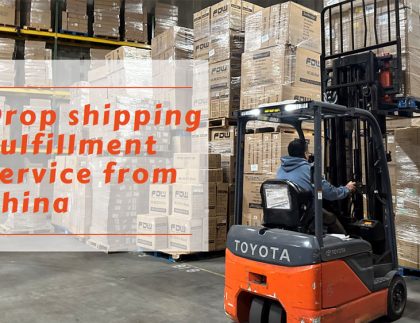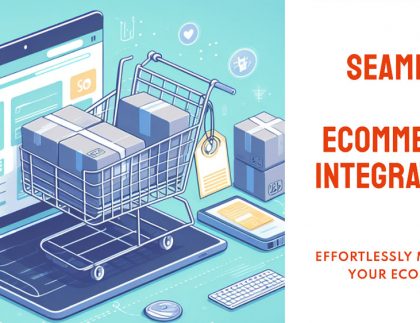What’s the Difference Between a Carrier and a Shipper?
In the world of logistics and transportation, it’s essential to grasp the distinction between a carrier and a shipper. While these terms are often used interchangeably, they refer to distinct roles and responsibilities within the shipping process.

Have you ever wondered how global trade and e-commerce companies efficiently transport goods across borders and deliver them to customers worldwide?
The answer lies in the strategic collaboration between carriers and shippers.
But what exactly are the roles and responsibilities of these key players? How can importers optimize their supply chains to meet customer demands and stay competitive in the digital age?
To unravel these mysteries, let’s embark on a journey into the world of logistics and supply chain management. We will explore the intricate dynamics between carriers and shippers, delve into the essential terms that shippers need to know, examine different types of carriers operating in the industry, and how can DIDADI assist importers in optimizing their supply chains.
Table of Contents
What’s a Carrier vs. a Shipper?
When it comes to transportation logistics, carriers and shippers play distinct but interdependent roles.
A carrier, often a transportation company or a freight forwarder, is responsible for physically moving goods from one location to another. They have the necessary infrastructure, equipment, and expertise to handle the transportation process efficiently.
On the other hand, a shipper, typically a manufacturer, wholesaler, or retailer, is the entity that initiates the transportation process by entrusting their goods to a carrier. Shippers are the owners or consignors of the goods being transported.
The Role of a Carrier vs. The Role of a Shipper
The carrier’s primary role is to provide transportation services, ensuring the safe and efficient movement of goods. This includes arranging for appropriate modes of transportation, handling documentation, and complying with regulations.
Carriers are responsible for cargo loading, unloading, and ensuring timely delivery. They have the expertise to optimize routes, consolidate shipments, and utilize various transportation modes to meet the specific requirements of shippers.

Shippers, on the other hand, focus on packaging and preparing goods for transportation. They handle tasks such as consolidating shipments, labeling, and providing necessary documentation.
Shippers also communicate their specific requirements to carriers, including delivery schedules, handling instructions, and any special considerations for the goods being transported. They are responsible for ensuring that the goods are properly packaged and ready for transportation.

Key Terms Shippers Need to Know
To effectively collaborate with carriers and navigate the logistics landscape, shippers should familiarize themselves with key industry terms. Some essential terms include:
Freight Forwarder
A freight forwarder is a company or agent that facilitates the shipment of goods on behalf of the shipper. They handle various logistics tasks, including arranging transportation, documentation, customs clearance, and warehousing.
Bill of Lading (BOL)
A legal document that serves as a contract between the shipper and the carrier, detailing the goods being transported, their quantity, and the terms of transportation. It also acts as a receipt of shipment and proof of ownership.
Incoterms
Incoterms (International Commercial Terms) are standardized trade terms developed by the International Chamber of Commerce (ICC) to define the responsibilities of buyers and sellers in international transactions. They outline the allocation of costs, risks, and obligations between the parties involved in the shipment.
Customs Broker
A customs broker is a licensed professional or company that assists in the customs clearance process. They handle the necessary paperwork, compliance, and communication with customs authorities to ensure smooth import or export of goods.
Freight Rate
The freight rate is the price charged by the carrier or freight service provider for transporting goods from one location to another. It can be based on various factors such as distance, weight, volume, mode of transportation, and market conditions.
Demurrage and Detention
Demurrage refers to charges imposed by the carrier when the shipper or consignee exceeds the allotted time for loading or unloading cargo at a terminal or port. Detention, on the other hand, refers to charges applied when containers or equipment are held for an extended period beyond the agreed-upon free time.
Insurance Coverage
Insurance coverage refers to the protection against loss or damage to goods during transportation. Shippers or buyers may opt for cargo insurance to safeguard their goods in case of accidents, theft, or other unforeseen events.
Tracking and Tracing
Tracking and tracing involve monitoring the movement of shipments from the point of origin to the final destination. Carriers often provide tracking systems or online platforms that allow shippers and buyers to track the status and location of their freight in real-time.
Warehousing and Distribution
Warehousing and distribution refer to the storage and management of goods before, during, or after transportation. These services may be provided by carriers or specialized logistics companies and involve activities such as inventory management, order fulfillment, and distribution network optimization.
Last-Mile Delivery
Last-mile delivery refers to the final leg of the transportation process, from the distribution center or local hub to the ultimate delivery destination. It often involves delivering goods to individual customers’ doorsteps and is a crucial part of e-commerce logistics.
Types of Carriers
Carriers can be categorized into different types based on the mode of transportation they specialize in. Some common types of carriers include:
Trucking Companies
Carriers that primarily operate trucks for road transportation. They are suitable for transporting goods over short to medium distances and offer flexibility in terms of pickup and delivery locations
Air Cargo Carriers
Incorrect shipping of hazardous goods can lead to spills, leaks, or accidents, causing environmental damage, harm to public health, and property destruction. The release of toxic or flammable materials can contaminate soil, water bodies, and the air, posing risks to ecosystems, wildlife, and human populations.
Ocean Carriers
Improper handling and packaging of hazardous materials can result in accidents, fires, explosions, and injuries to individuals involved in the shipping process or those in proximity to the transportation route.
The consequences can be severe, leading to injuries, loss of life, and extensive property damage.
Rail Carriers
Mishandling hazardous materials can lead to a loss of trust from customers, suppliers, and stakeholders, damaging the company’s reputation and potentially leading to a loss of business opportunities.
Companies that prioritize safety and compliance are more likely to build strong relationships with partners and customers.
Courier and Parcel Carriers
It is imperative for shippers to prioritize safety and compliance to avoid these negative outcomes. Investing in proper training, following regulations, and partnering with reliable service providers can significantly reduce the risks associated with HAZMAT shipping.
Shipper-Carrier Relationship

The shipper-carrier relationship is a crucial aspect of efficient supply chain management. It requires effective communication, trust, and collaboration to ensure smooth transportation operations. Key elements of a strong shipper-carrier relationship include:
Clear Expectations
Shippers must clearly communicate their requirements, including pickup and delivery schedules, special handling instructions, and any necessary permits or documentation. Carriers should understand and acknowledge these expectations to ensure they can meet them.
Regular Communication
Open lines of communication help shippers and carriers stay informed about the progress of shipments, potential delays, and any changes to the transportation plan. Proactive communication helps address issues promptly and ensures transparency throughout the process.
Performance Evaluation
Shippers should assess carriers based on their performance, considering factors such as on-time delivery, cargo safety, and customer service. Constructive feedback helps carriers improve their services and fosters a mutually beneficial relationship.
Likewise, carriers should provide shippers with feedback on packaging, documentation, and any other areas that may impact the transportation process.
Collaboration for Problem Resolution
When issues or challenges arise during transportation, shippers and carriers should work together to find solutions and minimize disruptions. This collaborative approach helps in resolving problems efficiently and maintaining a positive relationship.
Follow specific guidelines for each mode of transportation (air, sea, land)
Understand and comply with the specific regulations and requirements for each mode of transportation, as they may differ based on the risks associated with the specific transport method.
Be aware of any restrictions or limitations that may apply to the shipment based on the chosen mode of transportation.
Regularly review and update procedures to stay compliant with changing regulations
Stay informed about the latest updates to HAZMAT shipping regulations and adjust procedures accordingly to maintain compliance. Monitor changes in the classification of hazardous materials and review packaging, labeling, and documentation requirements periodically.
By following these best practices, shippers can enhance safety, minimize risks, and ensure compliance with HAZMAT shipping regulations.
How DIDADI Can Help Importers Optimize Their Supply Chains
As a reputable 3PL (third-party logistics) company, DIDADI simplifies the process of optimizing supply chains for importers through its comprehensive platform.
Business owners benefit from enhanced visibility, efficient carrier selection, automated documentation, and performance analytics. With real-time shipment tracking, importers can proactively manage potential delays and exceptions.
DIDADI ensures a successful end-to-end supply chains by:
- Providing a range of shipping options, including sea shipping, ground shipping(rail shipping or truck shipping), and air shipping. DIDADI provides access to different transportation modes and multimodal options, which make your supply chain more flexible in competitive price.
- Offering real-time tracking and notifications, so customers can stay informed about their orders.
- Integrating with e-commerce platforms and order management systems(OMS) to streamline the shipping process.
DIDADI is a hybrid of a shipping platform and an inventory management system, which means that all returned products are automatically re-updated in your inventory as in stock, and re-packed and re-labeled to improve your customer service.
Previous Post: Navigating HAZMAT Shipping: A Comprehensive Guide
Start your ship now!
- Improve your cross-border shipping
- Decrease expenses
- Accelerate deliveries









